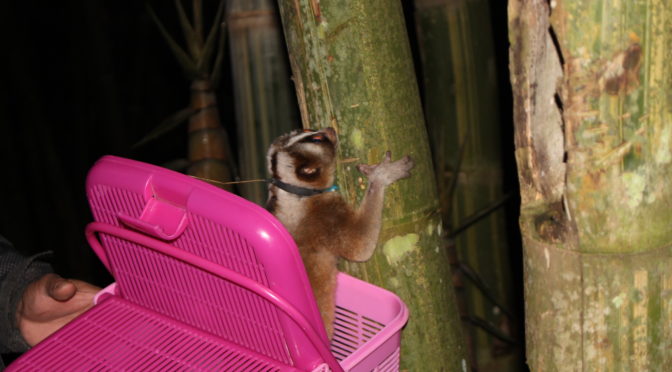I think we can all agree that it’s been a strange start to 2020. The fires in Australia, floods in the UK, not to mention a global pandemic. It would be easy, and completely understandable, to feel overwhelmed and anxious. Covid-19 dominates our conversations, many of us are self-isolating; it’s a scary time. I had every intention of not mentioning you-know-what at all so as not to add fuel to that already raging bonfire, but not recognising it seemed an injustice to those who have been so deeply affected. In an effort to brighten up the quite frankly dystopian news we have been seeing so regularly, we thought we’d share some of the good news we’ve had over the past couple of months. Whoever is out to get us with 2020 obviously wasn’t trying hard enough! So, without further ado, time to bring some dreams to your screens, sunshine to your timelines, and good deeds to your feeds.
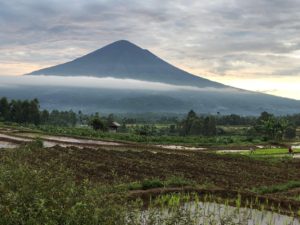
It’s a girl!
We’re very excited to announce that Indomi, one of the youngest lorises we follow here in Cipaganti, is a girl! Not only does this mean that I am owed a pizza by Wildlife Trade Officer, Rifqi, but it means that we have another female to add to our male-dominated roster. Doing it for the ladies!
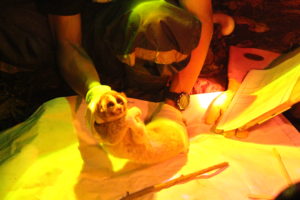
Like butter wouldn’t melt
After a fairly slow start, we have found our first baby of 2020. One of our most beloved lorises, Lupak, has given birth to what is now the project’s first great-grandbaby, Ghee! You might be thinking, “Ghee, that’s a weirdly specific name for a loris?”, and we’d forgive you for thinking that. But, with the undeniable similarity between “Lupak” and a certain Danish butter brand, we couldn’t help but stick with the theme. Although we adore getting to watch a little one growing up, (perhaps) more importantly, this mother and child reunion will give us much-needed insight into the development of Javan slow lorises and how a mother’s behaviour changes following giving birth. Welcome to the world, Ghee!
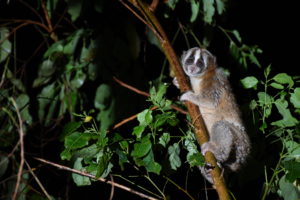
I get by with a little help from my friends
There are few things more satisfying than someone being directed to you for conservation/slow loris advice. This was perfectly demonstrated last week when three teenagers from a nearby village brought what they thought to be a lost loris to us in the hopes that we could help. Though to the untrained eye this loris who they found wandering around their school grounds would seem to be completely and utterly lost, it seems the school was getting in the way of this particular loris’ dispersal. As a young male, we can only assume he was in the process of flying the nest! Now, one week after being relocated, “Bantu” (“help” in Bahasa Indonesia) is enjoying life in a nearby area of nutritious and dense forest. Welcome to the family, Bantu!
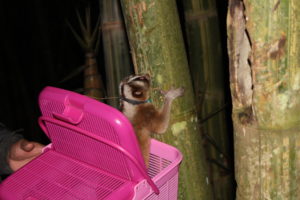
Who’s who?
We are one step closer to being able to analyse genetic samples from our lorises! With the next stage being granted, we can start getting excited about all of the revelations to come. Understanding how our lorises are related will help us to solidify our knowledge of social structures within lorises and we will also be able to study the make-up of loris venom. The possibilities are truly endless.
Wake up and smell the wildlife-friendly coffee
After months of planning (and years of hoping), on 12th March, we held our much-anticipated Wildlife-Friendly Coffee Workshop. Government officials, scientists, conservationists, and, most importantly, farmers from all over West and Central Java came together to discuss how best to farm, harvest and produce wildlife-friendly and organic coffee. It was a particularly proud moment for those of us at LFP as it felt truly special having stakeholders from all corners of the industry under one roof. Not only did we leave feeling a whole lot more knowledgeable, but we left with new networks, new contacts, and new friends.
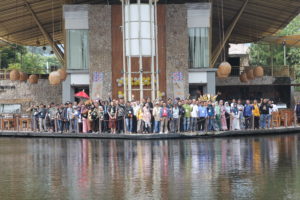
An enormous thank you to our funders and sponsors, we wouldn’t be able to celebrate these milestones without your enduring support. And to all of our supporters around the world, we see you, we appreciate you, and we are thinking of you in this strange time. Stay safe and make sure to get your daily dose of the positive.

